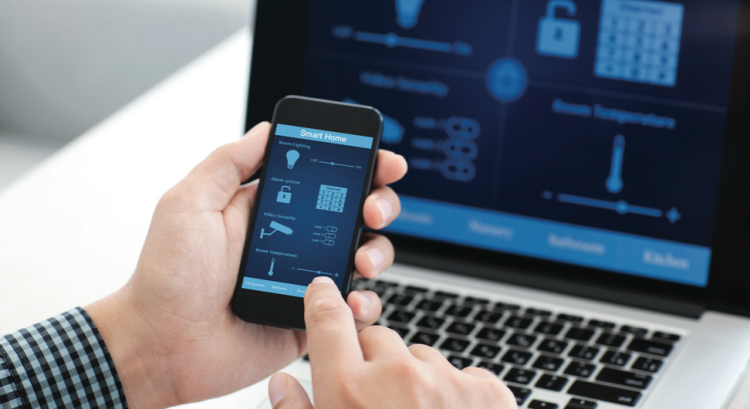BUILDINGS ARE NOW FULL OF SMART FEATURES THAT CAN HELP YOU MONITOR THE SAFETY AND EFFICIENCY OF YOUR FACILITY

Technology is evolving in everything around us. From semi-autonomous features in vehicles to the newest iPhone and android smartphone apps, we use this technology to make
our lives easier and more efficient.
The world of construction is also rapidly seeing the benefits of technology. Many condominiums, office towers and new homes are using ‘smart buildings’ as selling features.
What is a smart building? Think of it as a connected ecosystem of sensors and monitors that report to a main server that displays all of the information on a data hub or dashboard. The dashboard is accessible via computer, tablet or phone and allows dealers to view and adjust the information to ensure safety and energy efficiency.
How can it be integrated into an automotive facility? In most cases, it begins with fire, safety, building access and security systems. From there, lighting, ventilation systems and even audio/video systems can be integrated.
The tricky part, especially on a new build, is to start early to coordinate building systems so that all of the necessary infrastructure such as conduits and building controls are planned in a manner that reduces the number of trades and suppliers beyond your base building.
The most challenging part is that many of these systems do not fall into typical scope and responsibilities of your general contractor or architect whose aim is to provide you with the base building. For example, many smart building components, other than fire protection, are treated similar to the installation of tools, equipment and parts racking and must be planned and coordinated well in advance.
Although there are upfront costs, the results and benefits include lower ongoing operating costs and creating a superior environment for staff and customers. Here are some key components of a smart building:
Building access controls: It used to be by keys. Now it is keypads, electronic readers, exit control devices and electronic strikes and locks that ensure buildings and specific rooms are only accessed by people with the appropriate credentials. The smart building will also know which entrances are used most frequently and learn the flows and timelines of activity.
Although there are upfront costs, the results and benefits include lower ongoing operating costs and creating a superior environment for staff and customers.
Even more interesting is the ability to use RFID or license plate recognition systems to see when customers are entering your site or drive-through reception. These systems can even send a text or email to the service advisor or sales consultant to let them know their customer has arrived.
Security cameras: In our experience, this area is the most important to dealers. Connecting cameras and images/videos to their smartphones is paramount to see activity on site at all times and to know when there may be a threat of theft during non-business hours.
Lighting and circuit controls: Being able to monitor lighting and electricity can bring significant cost savings over the lifespan of a building. It is also possible to integrate sensors that see how bright showrooms are depending on the location of the sun, and can turn lights off as required. These circuit controls also ensure that items such as computer monitors and photocopiers are all turned off outside of business hours. This can all add up significantly over time.
Heating and ventilation: If you have seen the Nest thermostat, then you understand the concept. More importantly, smart buildings coordinate the heating and ventilation of an entire building. You would be surprised how often we see both AC and heating elements turned on at the same time. Integrated HVAC systems adjust based on many factors to ensure that all of your heating and cooling units are being monitored and used efficiently 24/7.
Speakers & audio/video: The final touches at a dealership can also be managed from a smart building dashboard. Music can be programmed and speakers can be adjusted, depending on the zone. As well, digital and screen content can be easily programmed and updated, depending on which vehicles, deals or service specials are the focus of the day.
Just like all technology, the cost of integrating smart building solutions is becoming more and more affordable. Some providers have turn-key solutions, while others act as a single resource to coordinate and integrate different solutions at multiple price points.
There are large, international companies leading the charge such as Honeywell and Siemens. As well, Canadian companies have had success with smart condos and health care facilities like Mircom.
A dealership operation has many components and complexities. However, a smart building “dashboard” is a relatively simple concept. By keeping track of and organizing building data, you can consistently provide a comfortable and efficient environment to your staff and customers.

















